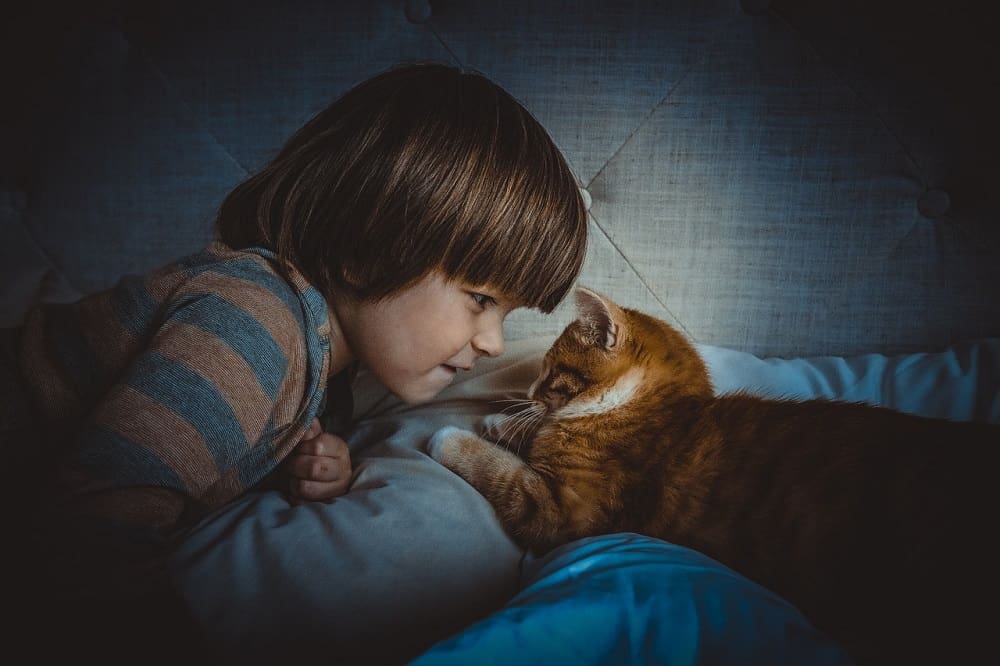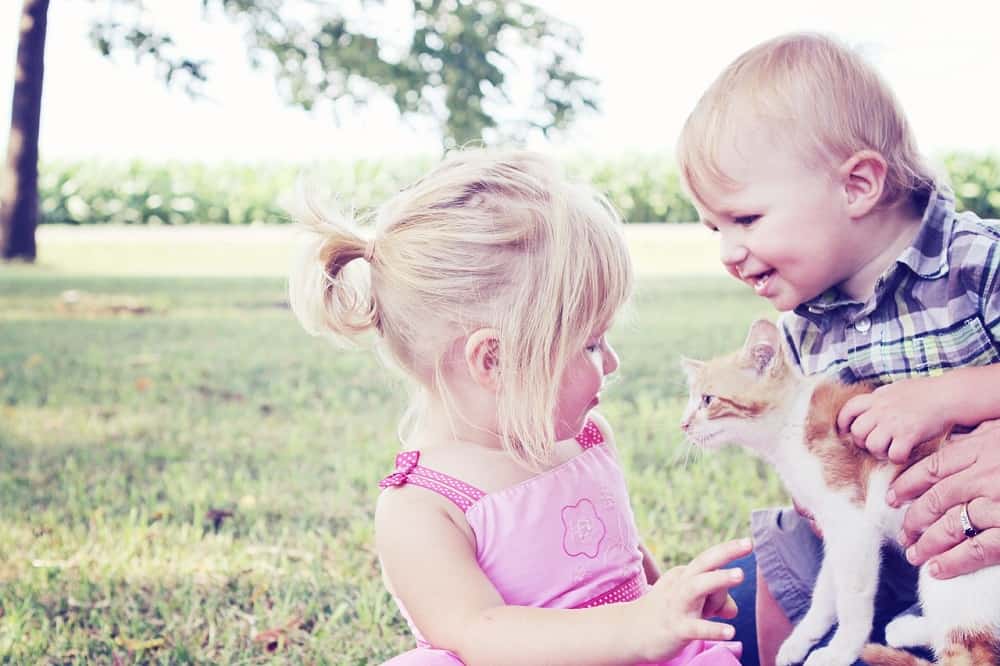Table of Contents

Everyone thinks that pets and children just naturally go together. Actually, they do not. That’s why we need to learn some things about childproofing and pets.
Yes, there are some instances when a pet immediately takes to a child. But, in most cases, you are not only going to need to train your pet to tolerate children, but also teach your children how to behave properly around pets, whether they are your pets or someone else’s.
Today we are going to take a look at various ways that you can train both your pets and your children to get along, and have that wonderful child/pet relationship that lasts a lifetime.
Training Pets to Tolerate Kids

While most dogs are tolerant of babies because they don’t move around much, once those babies become toddlers, it is often a completely different story. In fact, many problems between pets and kids start when they are toddlers and beginning to crawl and walk.
For instance, dogs with hunting instincts may see small children moving around, and think of them as prey. This predatory behavior can awaken even in dogs that have never been known to be interested in hunting.
In many cases, dogs and cats are afraid of young children, and will tend to not approach them at all.
If a child should approach a pet that is nervous, the pet’s first instinct is going to be to run away. But, should that child start pawing and pulling at the pet, chances are that the end results are not going to be good for the child.
In the case of dogs, keep them in the “stay” position when they are around small children. Reward this good behavior so the dog will well-behaved at all times in the expectation of being petted, praised, or even getting a treat.
If you have a cat, this can be a bit trickier, because you can’t just train a cat to sit and stay. This is when you will need to find ways to keep children and pets separate, until you have taught your child not to grab at or maul cats.
Most of the time, a cat will go out of its way to avoid children in the first place. Obviously, there are some exceptions, but until you can teach your children about how to behave with pets, and know how your pet is going to react to children, it is best to keep them apart as much as possible.
This is much like training your pet how to act when they’re all alone at home. Thinking about it, you might want to learn some of the pet safety tips when you’re not home.
Teaching Kids to Behave Around Pets

We can’t stress enough how important it is to teach children how to behave around pets, and the importance of teaching them at a very early age.
As soon as they are old enough to start moving around, they are old enough to be taught how to interact with pets. There are different things to teach at different stages of life.
Under 2 Years Old
While children this young aren’t bonding with pets, they are aware that they are there, and they will be curious.
They will talk to the pet and call its name, but they don’t have an emotional connection with the pet.
However, the dog may see the child as a littermate, and this can be a problem if the dog starts to become jealous.
Make sure children at this age are always supervised when they are with pets. A playpen is a great tool to keep them separated.
Now is the time to start teaching your child how to interact with pets, including playing too roughly.
Make sure that the pet, particularly a dog, is not banished to the yard or barred from rooms in your home, including the nursery.
Pets are part of the family, and you can teach them to tolerate and even love children.
2-7 Years Old
Children at this age find pets funny, and they start to develop friendships with their pets. A dog may even still think of your children as littermates, and they will likely begin roughhousing together.
Most dogs don’t mind a bit of rough play, but you need to teach your children that they could hurt their pet by playing too roughly, and then the pet may respond by lashing out and hurting them.
Monitor child/pet interactions at this stage, and teach your kids appropriate pet games, such as fetch. Don’t let them play tug-of-war, as this can teach dogs to be dominant or aggressive.
7-11 Years Old
Children at this age are able to understand how to play and interact with pets, and now is the time to let them start taking part in the actual care of the pets.
Let them feed your pets, and even train them to do various tricks and other things.
Children love to train pets, and they are more playful than adults, which most dogs seem to enjoy more. Include your children in a dog’s obedience training, walking, etc.
Allow smaller children to take part in walks, and older children will be able to take the leash once they know how to control the pet.
Even though you want your kids to learn responsibility, it is not a good idea to let them take over all of the pet care and training responsibility. Children cannot give a pet the time it needs, so you do need to play a big role in pet care and training.
If you don’t have pets yet and do not want to take on all of this added responsibility at this time, it is probably best to wait until your family is better prepared to take on the responsibility of pet ownership.
Below are also additional tips about pet proofing your home to make things comfortable, non-irritating and less stressful to your pets.
Pet proofing your home can greatly help with the temperament of your pet as well as controlling their behavior.
Conclusion
Once children start hitting puberty, chances are that while they still love their pets, they are going to have more outside interests. At this stage of the game, you will need to step in and start giving your pet the attention it is now lacking.
Through all of the stages of childhood, you can help to teach your kids how to love and respect pets, and not only will they be learning and growing, so will you.